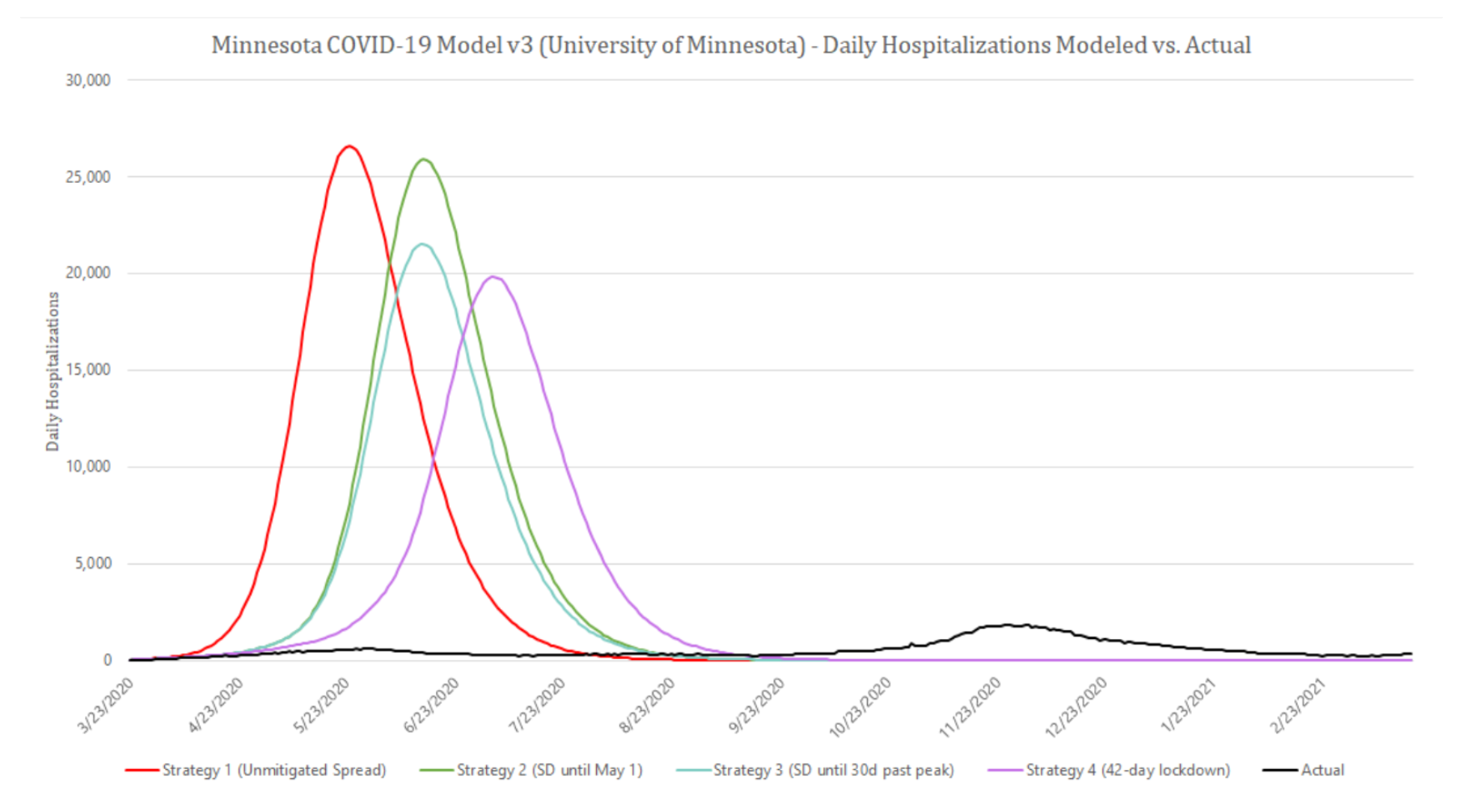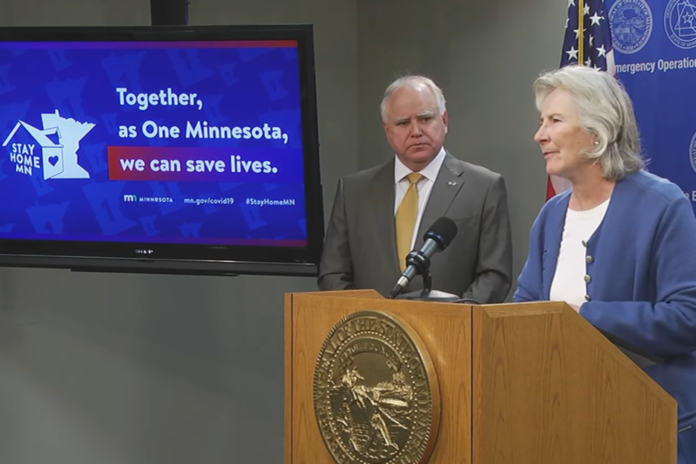The mathematical models used to justify Minnesota Gov. Tim Walz’s sweeping shutdowns were shockingly wrong, according to state-reported data.
In March 2020, Minnesota began to base its treatment of the coronavirus pandemic on a series of statistical predictions generated by the University of Minnesota over one weekend, partly by students. These models claimed that without government intervention, COVID-19 would land well over 25,000 Minnesotans in the hospital. At best, the models predicted that through severe intervention the government could lower that number to about 20,000.
In reality, the state saw a peak hospitalization figure of around 2,500 in late November. Not only was this peak just 10% of what the state had predicted it would be, it also came about half a year after the model said it would.
Walz’s charts foretold that pandemic-related hospitalizations would peak around June 20, 2020, hitting crescendos in the mid 20,000s. In reality, all Minnesota hospitals combined admitted only 25 COVID patients on that day, per the state Department of Health.

Matt Malkus, an online COVID-commentator, published a graph recently that overlays the state’s predictions with reality, seen above. Malkus says his chart reflects data drawn directly from the UMN’s modeling efforts, government reports and the Atlantic’s COVID Tracking Project.
Meanwhile, the scientific community has conceded that COVID modeling was a failed endeavor.
“Forecasting for COVID-19 has failed,” reported scientists back in August 2020 writing for a peer reviewed journal archived by the U.S. National Library of Medicine.
“Epidemic forecasting has a dubious track-record, and its failures became more prominent with COVID-19,” the article reads. “When major decisions (e.g. draconian lockdowns) are based on forecasts, the harms (in terms of health, economy, and society at large) and the asymmetry of risks need to be approached in a holistic fashion, considering the totality of the evidence,” the authors conclude.
Another article published by the world renowned New England Journal of Medicine in June 2020 also concludes that COVID modeling is woefully inaccurate.
However, many authorities have seemed unwilling to trust this science as new mathematically based predictions about the future trajectory of the coronavirus pandemic have stirred recent movement towards further coronavirus restrictions both in the U.S. and abroad.

















